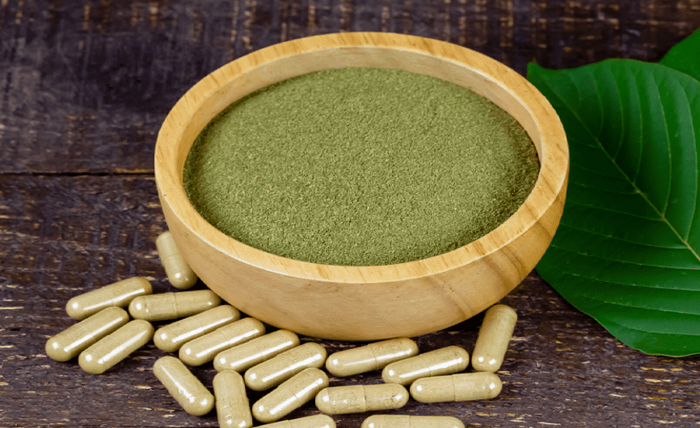Exploring the Benefits of Kratom: Pain Relief and Beyond

For thousands of years, people have turned to herbs and plants for relief from various medical conditions. One plant that has garnered considerable attention in recent years is Kratom: native to Southeast Asia; this herbal medicine has been used by local peoples as an effective natural remedy for chronic pain conditions, among other purposes.
This article seeks to explore the benefits of Kratom—including its potential efficacy in addressing specific types of pain relief and the varying ways it can be enjoyed. We’ll look at how Kratom works on a physiological level and some tips on integrating it into your own life. Join us as we dive further into this exciting area and discover why more people are turning towards holistic therapies like Kratom daily.
What is Kratom, And What Are its Purported Benefits for Pain Relief And Other Ailments?
Kratom, or Mitragyna speciosa, is a tropical evergreen tree native to Southeast Asia. The leaves of the Kratom tree have been used for centuries by indigenous people for various medicinal purposes. Recently, Kratom has gained popularity in the Western world as a natural alternative to traditional pharmaceuticals for pain management, anxiety relief, and assistance with opioid withdrawal symptoms.
Its purported benefits for pain relief and other ailments come from the alkaloids in the leaves, which interact with the body’s opioid receptors. However, the FDA has not approved Kratom for medicinal use, and its safety and efficacy have not been thoroughly studied. As such, exercising caution when using Kratom and consulting with a healthcare professional before utilizing any alternative therapies is crucial. At https://www.authentickratom.com/kratom-strains/vietnam-kratom.html, you can find more information on Kratom.
Where Does Kratom Come from, And What Varieties Are Available in The Market Today?
Kratom is derived from the leaves of the Kratom tree, which grows primarily in Thailand, Indonesia, Malaysia, and other Southeast Asia. Today, Kratom can be found in various forms, such as powder, capsules, extracts, and tinctures. Generally, Kratom is sourced from mature trees carefully grown for the highest quality product.
Kratom is also available in various strains, each with unique properties and effects. The most popular types of Kratom include red vein, white vein, green vein, maeng da, Bali, thai, malay, and indo kratom. Understanding the differences between these strains can help you find the right one for your needs.
What Methods of Application Work Best for You To Get The Desired Effects from Kratom?
Kratom can be ingested in various ways depending on your personal preferences. The most traditional way of taking Kratom is through tea, which involves boiling the leaves in water for up to 15 minutes and then straining the liquid. This method provides a mild, calming effect and increases mental clarity.
Kratom powder can also be mixed with food and beverages like smoothies or juices, blended into yogurt or oatmeal, or eaten on its own. For those who don’t enjoy the taste of Kratom, taking capsules is a convenient alternative. However, remember that capsules take longer to absorb, so the effects may not be felt as quickly as other methods.
Regardless of your chosen method, starting with a low dose of Kratom and increasing gradually as needed is essential. It will help ensure that your body has time to adjust and you can find the proper dosage for optimal results.
Potential Side Effects Associated With Using Kratom
Although Kratom is touted for its potential benefits, it is essential to note that it may also have some side effects. Commonly reported adverse reactions include nausea, vomiting, constipation, dry mouth, dizziness, and headache. More severe reactions such as hallucinations, liver toxicity, and seizures may occur in rare cases.
It is also crucial to note that Kratom may not be safe to combine with certain medications, such as antidepressants and anti-anxiety drugs. If you are taking any prescription or over-the-counter medication, talking to your healthcare provider before using Kratom is essential.
Finally, long-term use of Kratom has been linked to addiction and withdrawal symptoms, so it is essential to use it responsibly. It is recommended to keep your dosage low and take breaks from Kratom every few days or weeks. It will help ensure that your body does not build up a tolerance, and you can continue to reap the benefits of this healing plant without risking adverse reactions.
How To Dosage And Use Kratom Correctly for Maximum Benefit
It is essential to use Kratom responsibly to maximize its potential benefits. Start with a low dose and increase it gradually until you find the optimal amount for your needs. It may be helpful to keep track of your dosage, how often you take it, and any changes in effects over time.
Most importantly, make sure that you purchase your Kratom from a reputable source. High-quality Kratom is usually sourced from mature trees and contains fewer impurities and contaminants. Additionally, read any labels or instructions with your product to ensure you take the correct dosage for optimal results.
Recent Research Findings About The Efficacy of Kratom As A Medicinal Herb
Recent research has focused on the potential therapeutic benefits of Kratom, including its ability to help manage pain, reduce anxiety and depression, and even aid in opioid withdrawal. More studies are needed to further explore these effects and assess their safety and efficacy.
Additionally, researchers are looking into the pharmacological mechanism behind Kratom’s pain-relieving effects and its potential toxicity and addictive qualities. By furthering our understanding of Kratom’s unique properties, we can better determine how to use this natural remedy responsibly and safely for the most benefit.





